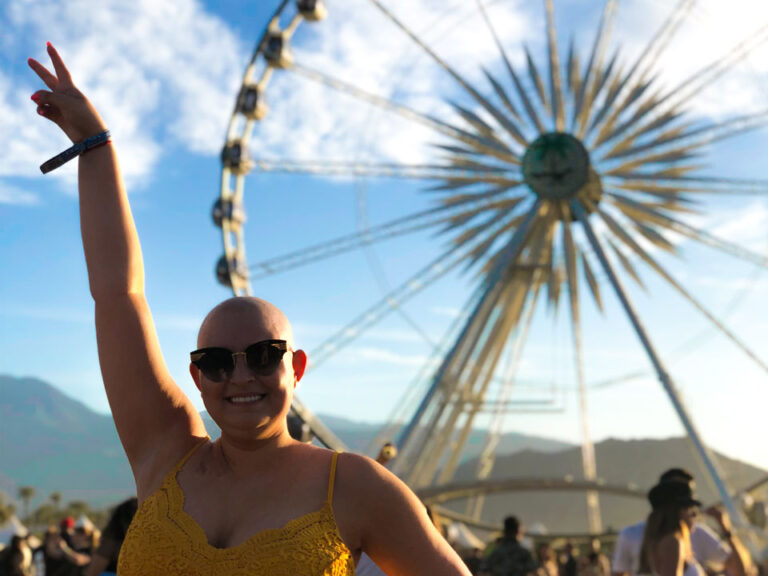A University of California, Irvine patient with glioblastoma recently received an experimental cancer vaccine from the U.S. subsidiary of Brussels-based Epitopoietic Research Corp. (ERC-USA). While most cases of patients receiving experimental medical treatment are not particularly newsworthy, this one was.
This anonymous patient is billed as the first to receive an investigational medical product under the Right to Try Act of 2017, a law signed by President Trump last May that claims to give seriously ill patients easier access to investigational medicines. Given the historic nature of this claim, and the likelihood that many cancer patients have encountered this news, we would like to unpack this story.
We’ve previously discussed why patients that have run out of approved treatments to try and that cannot participate in a clinical trial may find the right to try (RTT) pathway attractive. The president claimed that the law would give “hundreds of thousands” of patients access to drugs in the development pipeline. Sen. Ron Johnson (R-WI), the main RTT proponent in Congress, claimed that patients who were “running out of time” could be saved and their hope restored with a federal right to try law.
But these statements fail to acknowledge, firstly, that patients have been able to access experimental medical products outside of clinical trials through FDA’s expanded access pathway for over 30 years. Secondly, the primary reason more patients do not obtain access through the expanded access pathway is that companies have the right to decline requests for their experimental products and often do so.
The key difference between right to try and expanded access is that the latter pathway requires oversight by FDA and an IRB. Involvement of these entities may involve paperwork (although less than many imagine), but they also serve to protect patients from harm and exploitation that may occur from those who wish to capitalize upon patient desperation.
Right to try proponents incorrectly assert that expanded access is slow and denies many patient requests. However, the agency allows over 99% of the requests it receives to proceed. (FDA does not review the request until after a company has agreed to provide the product.) Emergency requests can be handled over the phone and reviewed within one day; non-emergency requests are, on median, reviewed within eight days.
FDA reviewers, who have access to confidential information on investigational medical products, can provide valuable information to the patient’s physician on the proposed treatment plan, and, in some cases, are able to identify an approved drug or a clinical trial for which the patient is eligible. Furthermore, the main reason for patients’ inability to access an investigational medical product is company unwillingness—not obstacles arising from FDA or IRB. Thus, positing that RTT will ameliorate non-trial access to investigational drugs is akin to saying that treatment for a broken arm will heal a leg wound.
Nevertheless, in addition to the federal RTT law, 41 states have enacted their own version of the law. While they all are called “right to try,” none of them confer any increased access to patients; indeed, they have been mocked as “right to beg” laws. Patients didn’t need a new law to enable them to request access to investigational products from the companies developing them.
We’ve argued that right to try laws would not meaningfully improve patient access to experimental medicines and could increase patient harms, both from physical risks associated with investigational medical products and due to exploitation. Numerous patient advocacy and physician organizations have echoed these concerns, including the American Society for Clinical Oncology, the American Cancer Society Cancer Action Network, Breast Cancer Action, and the National Organization for Rare Disorders.
At best, the laws won’t help patients; at worst, they could permit unscrupulous and unethical entities to sell ineffective treatments to desperate patients. (There are limits to what a company may charge a patient for an unapproved medical product, but no rules on what ancillary costs may be charged for labs, clinic visits, monitoring, etc.) Why, then, would a—by all appearances—legitimate company developing a vaccine that may help many future glioblastoma patients agree to provide its product-in-development to a patient via the RTT pathway?
We have not spoken to the doctor, patient, or institution involved. We base our analysis on media reports, conversations with the reporters who filed those stories, and contact with the company.
The patient received the investigational vaccine, which is in phase II testing in the U.S., through the California state RTT law. The company has provided its product in the U.S. via expanded access previously. In this case, the patient reportedly asked to receive the vaccine specifically through RTT. The patient’s doctor was willing to use the RTT pathway, as she viewed it as less onerous than expanded access. But a closer look reveals none of this is as clear-cut as it may seem.
While the main thrust of the RTT approach is to cut FDA and an IRB out of non-trial access to an investigational medical product, the myriad RTT laws have different provisions.
According to information on its website, UC Irvine follows the statutory requirements of California’s RTT law, which mandates more stringent reporting and informed consent requirements than does the federal RTT law. Because of the patient protections embedded in California’s version of RTT, UC Irvine’s IRB could ensure that the patient was informed of any alternative treatments and their right to stop the experimental treatment or seek palliative care. It must be underscored that this case was handled in accordance with California’s RTT law, which is unique: as such, we cannot conclude from this event how right to try would be handled elsewhere.
Further complicating the narrative of this case, ERC-USA notified FDA that it planned to treat a patient under the Right to Try Act. Prior contact with FDA is explicitly not a part of either the federal or California RTT law; the goal of the RTT laws was to cut FDA out of single patient access to experimental treatments outside of clinical trials.
FDA’s acknowledgement of ERC-USA’s communication to the agency occurred in July 2018—nearly six months before the patient began receiving treatment in late November. Presumably, it took time to create a personalized vaccine for the patient; nevertheless, this lengthy delay underscores the absurdity of RTT advocates’ central claim—that FDA’s expanded access pathway was too slow.
This case of RTT included additional “add-ons” not specified in any RTT law. This complexity has not been explained in most media coverage. Given that the Right to Try Act of 2017 was the only piece of legislation explicitly mentioned in the 2017 State of the Union address, it is reasonable to assume the president will mention this recent usage of RTT in the forthcoming State of the Union address.
If so, we expect more patients will believe RTT may offer them access to experimental treatments. Yet, according to very recent reporting from STAT News’ Nicholas Florko, several people with ALS who were very hopeful that RTT would offer them access to investigational treatments—including one of the patients for whom the federal law was named—have yet to receive anything via this pathway.
There are many other life-threatening diseases, but this situation starkly illustrates that, right to try is not working as many advocates hoped it would. (Except for Sen. Johnson, RTT’s chief advocate in the Senate, who stated that it “is actually really performing the way I intended it to.”) There are numerous reasons why companies that understand the difference between expanded access and RTT are unwilling to use the later pathway, the starkest of which is that if anything bad were to happen to a patient who received an experimental agent, the company wants to be able to remind FDA that it, too, signed off on the use of the product in that patient.
At best, the laws won’t help patients; at worst, they could permit unscrupulous and unethical entities to sell ineffective treatments to desperate patients.
The safest and most societally beneficial way for patients to get access to experimental treatments is by participating in a clinical trial. But when clinical trial participation is not feasible, some patients may wish to try an experimental product in hope of receiving medical benefit. Some companies may be willing to provide their drugs-in-development for this purpose. There exists a decades-old way for this to happen: expanded access. It has evolved over time and continues to do so.
For example, in 2017 FDA changed the rules to allow one IRB member to review a single patient expanded access request, rather than requiring full board review. The year before that, FDA streamlined its single patient expanded access request form to a two-page document. There are still changes that can be made to optimize expanded access for all stakeholders; however, creating a co-existing pathway for access with different rules is not helpful.
At present, patients with life-threatening conditions have 43 different pathways—expanded access, federal right to try, and the 41 state laws—through which they can access an experimental medical product.
In an area already rife with confusion, right to try laws are only making it more difficult to navigate seeking non-trial access to unapproved agents. To help patients with no other possible treatment options who wish to try experimental treatments, we need one system that works for everyone.
Using RTT laws moves us further away from that possibility.













